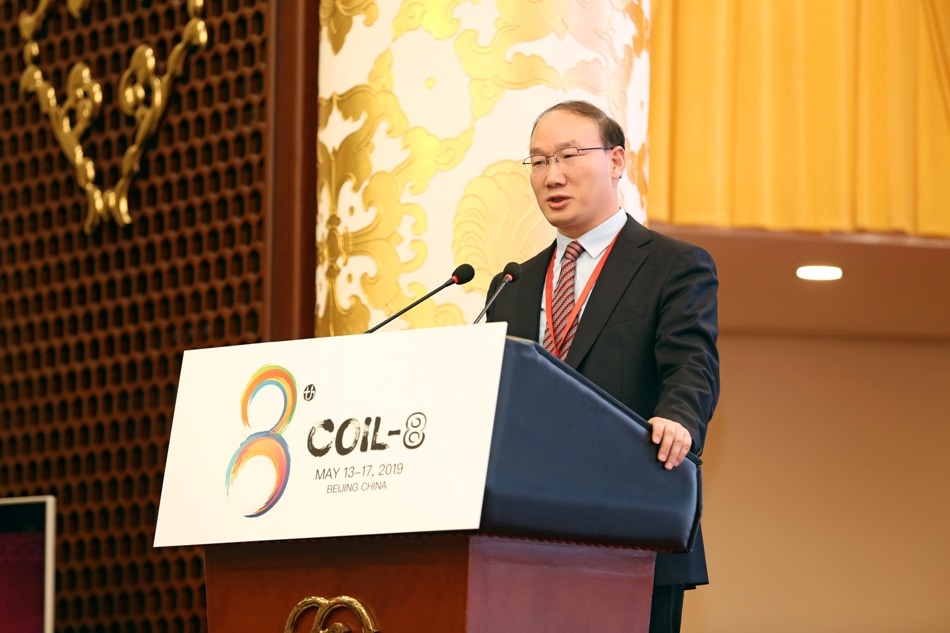May 20 2019
“Ionic liquid” (IL), which is a salt in the liquid state, is one of the most typical solvents in green chemistry. It has been extensively used in clean energy, biochemistry, new materials, green process engineering, and so on. It paves new ways for green technologies on the road to sustainable development.
 IPE Director Zhang Suojiang made the opening address. (Image credit: IPE)
IPE Director Zhang Suojiang made the opening address. (Image credit: IPE)
More than 700 researchers and delegates of the industrial sector from Australia, France, China, India, Germany, Korea, Japan, the United States, and the United Kingdom as well as other more than 30 countries gathered in Beijing for the 8th International Congress on Ionic Liquids (COIL-8) from May 13th to 17th, 2019. The aim of the Congress was the development and application of ILs in the future. In total, 443 presentations were held, including 227 posters, 131 oral presentations, 47 invited lectures, 20 plenary lectures, and 18 keynotes. COIL was held in China for the first time.
Institute of Process Engineering (IPE) of the Chinese Academy of Sciences has made significant advances in the development of IL-based technologies and their industrial application, which includes the conversion of CO2 to carbonate, alkylation of isobutane, and recovery of ammonia.
Ionic liquid has experienced stages from its initial appearance to the fundamental research to its demonstration application in industry, and now has stepped into a new era where fundamental research and industrial application interact between each other.
Zhang Suojiang, Director, IPE
The World’s first plant for production of dimethyl carbonate/ethylene glycol (DMC/EG) from CO2 catalyzed by supported ionic liquids was built in China, with an output of 33,000 t/a. The quality of DMC reached the battery level standard (purity ≥ 99.99%), and EG was superior to the national standard (purity ≥ 99.93%). This technology will reduce about 0.5 ton CO2 per ton product, save energy consumption by 50%.
Zhu Jianmin, Director, Oxiranchem
Zhu Jianmin worked with the team of researchers led by Professor Zhang Suojiang to make the CO2 conversion technology commercial.
The contributions of China in the field of ILs have become increasingly outstanding, and IPE has also gained global interest in this field. COIL is the most influential international congress in the field of ILs and was first held in 2005, and from then on every two years.
IPE has the opportunity to focus on commercialization on a bigger scale. And I hope the technology could be developed through IPE, applied in the Chinese market and help direct the rest of the world, and also try to develop more sustainable technology.
Robin Rogers, Professor, IPE
Robin Rogers is one of the winners of Presidential Green Chemistry Challenge Award.
Ionic liquid research of IPE becomes a leader in the world in this field definitely. IPE is tackling a lot of important sustainability issues that are very important in China and the world.
Douglas MacFarlane, Professor, IPE
MacFarlane is also a member of the Australian Academy of Sciences and Australian Academy of Technological Sciences and Engineering.
IL is now being used in high-end fields, including energy storage, pharmaceutical, nuclear fuel reprocessing, biomaterials, and so on. According to Hexa Research, it is anticipated that the emerging global IL market size would reach more than US$40 million for the predicted years 2016–2024 with a CAGR of around 9.35%. Novel methods based on ILs will contribute to the green and sustainable development for the people.